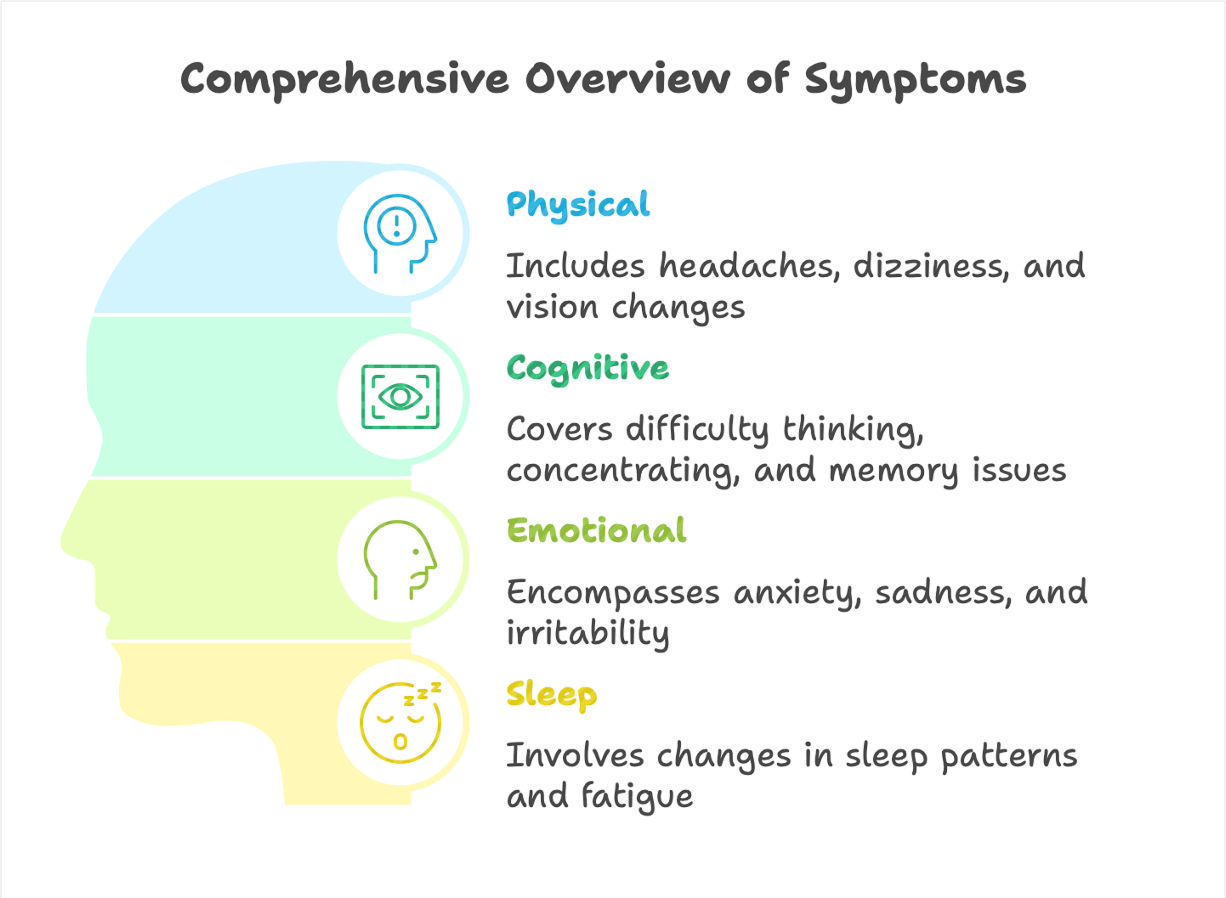
WHAT IS CONCUSSION?
A concussion is a common form of mild traumatic brain injury (mTBI) that occurs when an external force to the head, neck, or body causes the brain to move rapidly within the skull. This movement can stretch and strain nerve cells and blood vessels, temporarily disrupting normal brain function. In some cases, the impact may also affect the ocular (vision) and vestibular (balance) systems, leading to additional symptoms.
Concussions can occur across all age groups, from infants to older adults. Importantly, no two concussions are the same. The signs and symptoms can vary widely, even in individuals who have sustained multiple concussions in the past. While the majority of people may recover fully, the duration and severity of recovery can differ significantly between individuals. Medical evaluation is essential after a suspected concussion, both to exclude more serious brain injuries and to guide appropriate management.
Historically, concussions were often considered minor injuries that resolved on their own. However, current research highlights that concussions may be more complex, with recovery times and symptom severity ranging from mild and brief to prolonged and disruptive. Additionally, repeated sub concussive impacts—smaller head impacts that may not cause obvious symptoms—have been linked to potential long-term brain changes and microscopic damage. These findings have raised concern about the cumulative effects of head trauma, particularly in contact sports. Consequently, many health and sports organisations have revised their concussion management protocols to emphasise prevention, early recognition, and safe return-to-activity guidelines
Signs and Symptoms of a Concussion
A concussion can produce a wide variety of signs (observable by others) and symptoms (experienced and reported by the injured person). No two concussions are exactly the same, and it is possible for individuals to show different signs and symptoms—even if they have sustained a concussion in the past. Concussion signs and symptoms may appear immediately after the injury, or they may develop and worsen over the following hours or days. Importantly, the presence of even one sign or symptom is enough to suggest that a concussion may have occurred. To make recognition easier, concussion signs and symptoms are commonly grouped into four categories:
A concussion can produce a wide variety of signs (observable by others) and symptoms (experienced and reported by the injured person). No two concussions are exactly the same, and it is possible for individuals to show different signs and symptoms—even if they have sustained a concussion in the past. Concussion signs and symptoms may appear immediately after the injury, or they may develop and worsen over the following hours or days. Importantly, the presence of even one sign or symptom is enough to suggest that a concussion may have occurred. To make recognition easier, concussion signs and symptoms are commonly grouped into four categories:

Red Flags: Emergency Warning Signs
Certain symptoms may indicate a more serious brain injury rather than a typical concussion. These are known as red flags, and immediate medical attention should be sought if any of the following occur:
Certain symptoms may indicate a more serious brain injury rather than a typical concussion. These are known as red flags, and immediate medical attention should be sought if any of the following occur:
•
Severe or worsening headache
•
Loss of consciousness, or a decline in responsiveness
•
Seizure or convulsions
•
Repeated vomiting
•
Blurred, double, or altered vision
•
Neck pain or tenderness
•
Weakness or inability to move parts of the body normally
•
Numbness, tingling, or burning sensations in the arms or legs
•
Increased confusion, agitation, or unusual restlessness
•
Continuous bleeding or clear fluid leaking from the ear or nose